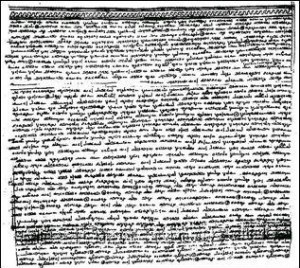
The Haran Gawaita and the Baptism of Hibil Ziwa by E. S Drower. The Haran Gawaita or Inner Haran is a Mandaean text which tells the history of the Mandaeans and their arrival in Iraq as Nasoreans from Jerusalem. According to the Haran Gawaita, John the Baptist was baptized, initiated, and educated by the patron of the doctrine of Nasirutha (“secret knowledge”), Anuš-ʼuthra, the hierophant of the sect. According to Drower, the Mandaeans were one of the earliest key Gnostic sects. Many of the original Nasoraeans became Christians and in Modern Israeli Hebrew the term Notzrim has come to simply mean Christians.
Download the free PDF e-book here:
 The Haran Gawaita and the Baptism of Hibil Ziwa
The Haran Gawaita and the Baptism of Hibil Ziwa
Who were the Nasoreans?
The term “Nasoreans” often refers to the Nasara or Nasaraeans, an early religious sect also known as the Nazarenes. This group should not be confused with the inhabitants of Nazareth, nor should it be directly associated with what is commonly understood as mainstream Christianity today.
Here is some context about the Nasoreans or Nazarenes:
- Early Christian sect: The Nasoreans, or Nazarenes, were one of the early sects in the diverse spectrum of Christianity, believed to have emerged in the first century. They have been described in different historical and religious contexts, sometimes as Jewish Christians who strictly kept Jewish law and traditions but acknowledged Jesus as the Messiah.
- Connection with Jesus of Nazareth: The term “Nazarene” is also associated with Jesus, often called “Jesus of Nazareth.” However, the Nasoreans as a sect were distinguished by their specific religious practices and beliefs, which may have included observing the Torah and other customs that were more aligned with Judaism.
- Distinct from mainstream Christianity: As Christianity evolved and various doctrines became solidified with the mainstream Christian church’s development, the Nasoreans, among other sects, were often sidelined, suppressed, or declared heretical due to their beliefs and practices. This was because their perspectives often did not align with the theological direction set by the emerging dominant Christian church.
- Later interpretations and Mandaeism: The term “Nasorean” has also been associated with groups like the Mandaeans, known for their gnostic teachings and possibly for being followers of John the Baptist. They had distinctive beliefs, including a dualistic worldview and a rejection of Jesus as the Messiah. Their religious literature and traditions set them apart from both mainstream Jewish and Christian groups.
The historical understanding of groups like the Nasoreans is complex due to the scarcity of primary sources and the difficulty in interpreting the texts that do exist. Much of the early history of these groups is reconstructed from accounts written by outsiders, often those who opposed them, which further complicates an unbiased historical understanding.
